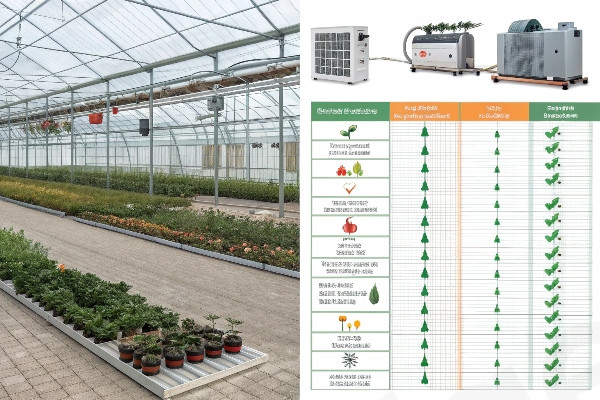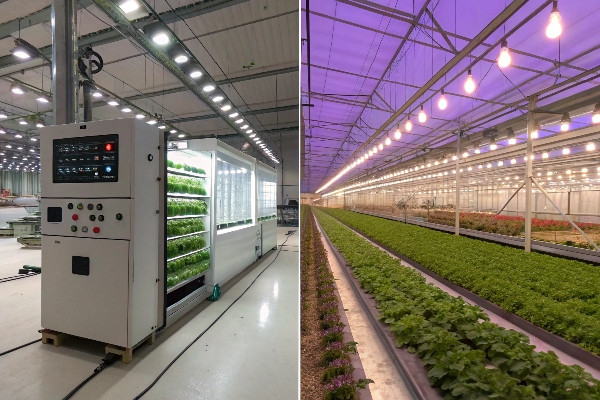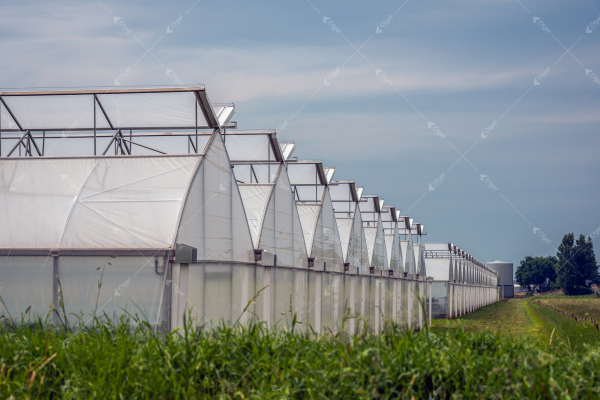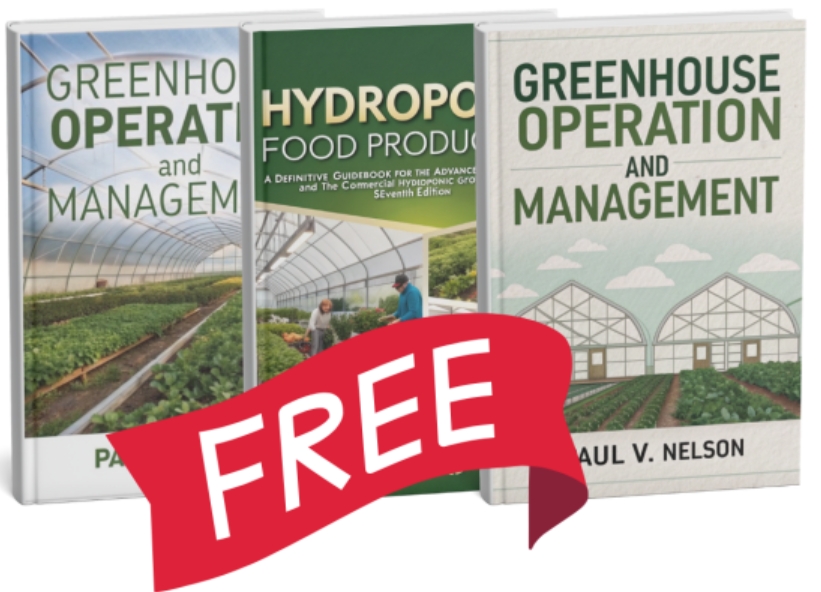Hot climates destroy crops and bankrupt growers. Traditional greenhouse designs fail when temperatures soar. Smart cooling strategies ensure profitable harvests year-round.
Successful hot climate greenhouses combine strategic ventilation design, intelligent shading systems, and energy-efficient cooling technologies to maintain optimal growing temperatures below 30°C even when outside temperatures exceed 45°C, ensuring consistent crop production and profitability.

Advanced design principles create comfortable growing environments in extreme heat.
After nearly three decades of designing greenhouses for the world’s hottest regions, I have learned that success depends on understanding heat as your primary enemy. Every design decision must prioritize temperature control while maintaining cost efficiency. The growers who succeed in hot climates think differently about greenhouse design from the very beginning.
Natural vs. Fan Ventilation: Air Circulation Strategies for Hot Climate Greenhouses?
Poor air circulation creates dead zones where heat accumulates and plants suffer. Choosing between natural and mechanical ventilation affects both crop health and energy costs. Strategic airflow design saves crops and money.
Natural ventilation reduces operating costs by 70% compared to mechanical systems while providing adequate cooling for most hot climate applications, but fan ventilation becomes essential when outside temperatures exceed 40°C or when growing high-value crops requiring precise environmental control.
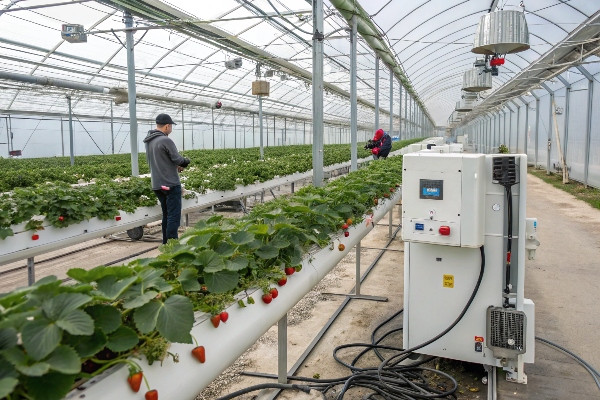
Natural and mechanical ventilation each serve specific roles in hot climate cooling.
Natural ventilation harnesses thermal buoyancy and wind pressure to create airflow without energy consumption. Hot air naturally rises and exits through roof vents while cooler outside air enters through side openings. This creates continuous air exchange that removes heat and humidity from the growing environment.
The effectiveness of natural ventilation depends on proper vent sizing and positioning. I recommend vent areas equal to 25% of the floor area for hot climate applications. Ridge vents should run continuously along the roof peak while side vents position at crop height to ensure air movement through the plant canopy.
Wind direction affects natural ventilation performance significantly. Prevailing winds create positive pressure on windward walls and negative pressure on leeward sides. This pressure differential drives airflow through the greenhouse. We orient greenhouses perpendicular to prevailing winds to maximize this effect.
Mechanical ventilation becomes necessary when natural systems cannot maintain acceptable temperatures. Exhaust fans create controlled air exchange rates independent of weather conditions. This reliability proves critical for high-value crops that cannot tolerate temperature fluctuations.
Fan placement requires careful consideration of airflow patterns. Exhaust fans should install at the highest point to remove hot air effectively. Intake openings position opposite the fans to create uniform airflow across the entire growing area. We calculate fan capacity based on achieving 1-2 air changes per minute during peak heat conditions.
| Ventilation Type | Energy Cost | Temperature Control | Initial Investment | Best Application |
|---|---|---|---|---|
| Natural Only | $0/month | ±5°C variation | Low | Basic crops, mild heat |
| Hybrid System | $200-500/month | ±3°C variation | Medium | Most applications |
| Full Mechanical | $800-1500/month | ±1°C variation | High | Premium crops |
| Semi-closed | $1200-2000/month | ±0.5°C variation | Very High | Research, high-value |
Internal vs. External Greenhouse Shading: Which is Better for Hot Environments?
Direct sunlight overheats plants and increases cooling costs dramatically. Shading location affects both light quality and temperature control effectiveness. Smart shading choices reduce energy bills while protecting crops.
External shading systems reduce greenhouse cooling loads by 60% compared to internal systems by blocking solar radiation before it enters the structure, while internal shading provides better light control and crop protection but requires 40% more cooling energy to maintain optimal temperatures.

External shading prevents heat buildup more effectively than internal systems.
External shading intercepts solar radiation before it penetrates the greenhouse covering. This prevents the greenhouse effect from occurring, keeping the internal structure cooler. Shade cloth positioned 30-50cm above the roof creates an air gap that provides additional insulation while allowing air circulation.
The air gap between external shading and the roof acts as a thermal buffer. Hot air trapped in this space rises and escapes without heating the greenhouse interior. This passive cooling effect can reduce internal temperatures by 8-12°C compared to unshaded structures.
Internal shading systems install inside the greenhouse structure, typically suspended from the framework. While these systems cost less to install and maintain, they allow solar radiation to penetrate the covering material before being blocked. This trapped energy must be removed through cooling systems.
Retractable shading provides the best of both approaches. Automated systems deploy shade cloth during peak sun hours and retract during cloudy periods or early morning. This maximizes light availability while preventing overheating during critical afternoon hours.
Material selection affects shading performance significantly. Aluminized screens reflect heat while standard cloth absorbs radiation. We recommend 50-70% shade factors for most hot climate applications. Higher shade percentages may reduce temperatures but also limit photosynthesis.
Climate control integration optimizes shading effectiveness. Sensors monitor light levels and temperature to automatically adjust shade deployment. This ensures optimal growing conditions while minimizing energy consumption for cooling systems.
| Shading System | Heat Reduction | Light Control | Installation Cost | Maintenance |
|---|---|---|---|---|
| External Fixed | 60% reduction | Limited | Medium | Low |
| External Retractable | 70% reduction | Excellent | High | Medium |
| Internal Fixed | 30% reduction | Good | Low | Low |
| Internal Retractable | 40% reduction | Excellent | Medium | Medium |
Reducing Operational Costs: Energy-Saving Cooling Measures for Hot Climate Greenhouses?
High energy bills destroy profitability in hot climate operations. Cooling costs can exceed 40% of total operating expenses. Strategic energy management turns profitable operations from money-losing ventures.
Integrated cooling strategies combining thermal mass, evaporative cooling, and smart automation reduce energy consumption by 50-70% while maintaining optimal growing conditions, with payback periods of 18-24 months through reduced electricity bills and improved crop yields.
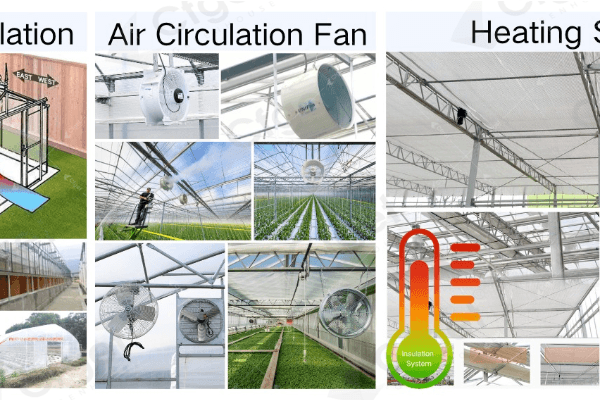
Smart automation and thermal mass storage dramatically reduce cooling energy needs.
Thermal mass storage provides the most cost-effective cooling strategy for hot climates. Water tanks or concrete floors absorb excess heat during the day and release it slowly at night. This natural temperature buffering reduces cooling system runtime by 30-50% during peak heat periods.
We install water storage systems equal to 10-15% of the greenhouse floor area. Black plastic tanks work effectively and cost less than concrete installations. These tanks position along the north wall where they receive minimal direct sunlight but maximum thermal benefit.
Evaporative cooling offers superior energy efficiency compared to refrigeration systems. Pad-and-fan systems consume 75% less electricity than air conditioning while providing adequate temperature control for most crops. The key lies in proper system sizing and water management.
Automated controls optimize cooling system operation through real-time monitoring and adjustment. Sensors track temperature, humidity, and light levels to determine optimal cooling strategies. This prevents energy waste from over-cooling while ensuring crop protection during heat spikes.
Heat recovery systems capture waste heat from cooling operations for beneficial uses. Hot air exhausted from cooling systems can heat water for cleaning or provide supplemental heating during cool periods. This integrated approach maximizes energy efficiency across all greenhouse operations.
Insulation improvements reduce cooling loads significantly. Double-wall polycarbonate panels provide better thermal performance than single-wall materials. Proper sealing of gaps and openings prevents conditioned air loss and reduces cooling system workload.
| Energy-Saving Measure | Energy Reduction | Implementation Cost | Payback Period | Difficulty |
|---|---|---|---|---|
| Thermal Mass | 30-40% | $5-8/m² | 12-18 months | Easy |
| Automated Controls | 25-35% | $15-25/m² | 18-24 months | Medium |
| Improved Insulation | 20-30% | $10-15/m² | 24-36 months | Medium |
| Heat Recovery | 15-25% | $20-30/m² | 36-48 months | Complex |
From Small Home Greenhouses to Large Commercial Projects: Universal Design Principles for Hot Climates?
Scale affects design complexity but core cooling principles remain constant. Small growers need simple solutions while commercial operations require sophisticated systems. Universal principles ensure success regardless of project size.
Hot climate greenhouse design principles scale effectively from 20m² hobby structures to 10,000m² commercial facilities by maintaining consistent height-to-area ratios, ventilation rates of 40-60 air changes per hour, and cooling capacity of 150-200 watts per square meter regardless of greenhouse size.

Core design principles apply across all greenhouse sizes and applications.
Height requirements scale proportionally with greenhouse area to maintain effective natural ventilation. Small greenhouses need minimum 3-meter heights while large commercial structures require 6-8 meter shoulder heights. This height-to-area relationship ensures adequate air volume for thermal stratification.
Ventilation area calculations remain constant across all scales. Total vent area should equal 25-30% of floor area for natural ventilation systems. This ratio applies whether designing a 50m² hobby greenhouse or a 5,000m² commercial facility. Larger structures simply require more vent openings distributed across the structure.
Cooling system capacity scales linearly with floor area and crop requirements. We calculate 150-200 watts of cooling capacity per square meter for most hot climate applications. Small greenhouses might use simple exhaust fans while large facilities require sophisticated pad-and-fan or semi-closed systems.
Structural considerations change significantly with scale. Small greenhouses can use lighter framing materials while large structures require engineered steel frameworks. However, the basic design principles of maximizing height and ventilation remain consistent across all sizes.
Automation complexity increases with greenhouse size and crop value. Home greenhouses might use simple thermostatic controls while commercial operations require computerized climate management systems. The fundamental goal of maintaining optimal growing conditions remains the same regardless of control system sophistication.
Material selection principles apply universally but quantities affect purchasing options. Small projects might use retail materials while large installations benefit from wholesale pricing and custom fabrication. Polycarbonate panels, shade cloth, and cooling systems follow the same performance criteria regardless of project size.
| Greenhouse Size | Height Requirement | Ventilation Area | Cooling Capacity | Automation Level |
|---|---|---|---|---|
| Home (20-100m²) | 3-4 meters | 25% floor area | 150W/m² | Basic thermostat |
| Small Commercial (500-1000m²) | 4-5 meters | 25% floor area | 175W/m² | Multi-zone control |
| Medium Commercial (2000-5000m²) | 5-6 meters | 30% floor area | 200W/m² | Computer control |
| Large Commercial (5000m²+) | 6-8 meters | 30% floor area | 200W/m² | Full automation |
Conclusion
Successful hot climate greenhouse design requires integrated approaches combining proper ventilation, strategic shading, energy-efficient cooling, and scalable design principles that ensure profitability across all project sizes.
